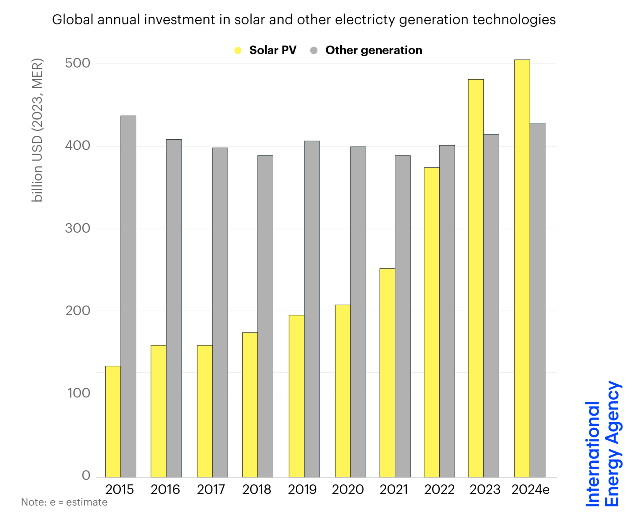The International Energy Agency (IEA) has unveiled the latest edition of its annual publication, World Energy Investment, revealing significant insights into current investment trends within the global energy sector.
Despite financial pressures, the report highlights a substantial shift towards clean energy investments, which are poised to nearly double the investment in fossil fuels in 2024. This shift is facilitated by improving supply chains and declining costs for clean technologies.
For the first time, total global energy investment is projected to surpass $3 trillion this year. Out of this, approximately $2 trillion will be directed towards clean technologies, including renewables, electric vehicles, nuclear power, grids, storage, low-emission fuels, efficiency improvements, and heat pumps. In contrast, a little over $1 trillion will be allocated to coal, gas, and oil.
However, the report underscores ongoing imbalances and deficiencies in energy investment across various regions, posing significant challenges to developing a secure, sustainable, and equitable energy system.
One of the report’s key findings is that global investment in solar PV is now outpacing spending on all other technologies for generating electricity combined. In 2024, solar investment is set to grow to $500 billion as module prices decline.
“Clean energy investment is setting new records even in challenging economic conditions, highlighting the momentum behind the new global energy economy. For every dollar going to fossil fuels today, almost two dollars are invested in clean energy,” IEA Executive Director Fatih Birol said.
In 2023, for the first time, combined investment in renewables and grids exceeded spending on fossil fuels. Solar PV, in particular, is attracting significant investment.
China is expected to lead in clean energy investment in 2024, with an estimated $675 billion, driven by strong domestic demand for solar, lithium batteries, and electric vehicles. Europe and the United States follow with $370 billion and $315 billion, respectively, together comprising over two-thirds of global clean energy investment.
In emerging and developing economies outside China, clean energy investment is forecasted to surpass $300 billion for the first time, led by Brazil and India. However, this amount represents only about 15 percent of the global total and is insufficient to meet the increasing energy demand in these countries, where high capital costs hinder new project development.
Global upstream oil and gas investment is set to rise by 7 percent in 2024 to $570 billion, continuing a similar trend from 2023. This aligns with current policy-driven demand projections for 2030 but significantly exceeds the investment levels needed to achieve national or global climate goals. Notably, only 4 percent of the oil and gas industry’s capital spending in 2023 was directed towards clean energy investments.
Investment in grids, critical for accelerating clean energy transitions, is anticipated to reach $400 billion in 2024, up from an annual average of $300 billion between 2015 and 2021. Spending on battery storage is also on the rise, expected to hit $54 billion in 2024, though this remains highly concentrated geographically.
“The rise in clean energy spending is underpinned by strong economics, continued cost reductions, and considerations of energy security. However, there is also a significant industrial policy element, as major economies compete for advantages in new clean energy supply chains,” Fatih Birol said.






